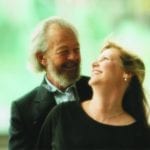What I usually emphasize is both meditation and aligning your life so that you make your life the prayer. You try to live and become that which you are studying and learning. You become forgiving. In the beginning, forgivingness seems like an artificial practice. Jesus Christ said, “Forgive them, for they know not what they do.” That’s a mentalization, and when you’re angry at somebody, it may cross your mind, and you think, Well, I should probably be seeing it differently, but I don’t. But as you get deeper in it, then you think, Well, how can I see this through different eyes? How can I alter my experience of this? Then that requires a deeper study. You’re trying to go from the familiarity of the intellectual to the experiential. You’re trying to become that which was formerly mental and is now incorporated into your personality and your way of actually being in the world.
…You meditate on some specific truth that you’ve picked up until you really become the awareness of the truth and the reality of that. Then you don’t need to tell yourself, “Well, I should be forgiving that person.” You start to see, eventually, that everybody is only being what they are, what they can be at the moment. Everybody is just being what they could be at the moment, and if not, it’s because they can’t be. If they were able to be different, they would be. You have a certain sympathy for everyone, that everyone is pretty much stuck with the human condition. And the human condition is, frankly, extremely difficult, for the individual as well as for whole societies and civilizations.
…A contemplative lifestyle is more effective. It’s a way of being in the world, because now you’re trying to become that which you have studied. You can do it continuously. A person can be contemplative no matter what they’re doing. My own lifestyle was contemplative for many years, and I was aware of exactly how I was being with each specific incident. That way, you become more aware of the reality of other people, as well. You become aware of their reality, and get out of the solipsistic view that reality is how you see it. You become aware that there’s a reality, and this is just the way you are seeing it. This is not the way the world is—it’s the way you’re seeing the world.
The Wisdom of Dr. David R. Hawkins: Classic Teachings on Spiritual Truth and Enlightenment, Ch. 8, pg. 133-135


